Architects: Want to have your project featured? Showcase your work through Architizer and sign up for our inspirational newsletters.
As exhibition architecture continues to push boundaries, traditional museum buildings are making way for new and exciting design concepts. The latest trend? Subterranean museums.
These underground spaces are not only remarkable engineering accomplishments but also offer a unique way to showcase art and history in a setting that perfectly intertwines with its surroundings. Imagine following a carefully curated open-air path that leads you below the surface or walking through underground tunnels revealing various hidden gems. These seven subterranean museums will surely provide an immersive and unforgettable experience that will leave a lasting impression on all who visit.
UCCA Dune Art Museum
By OPEN Architecture, Qinhuangdao, China

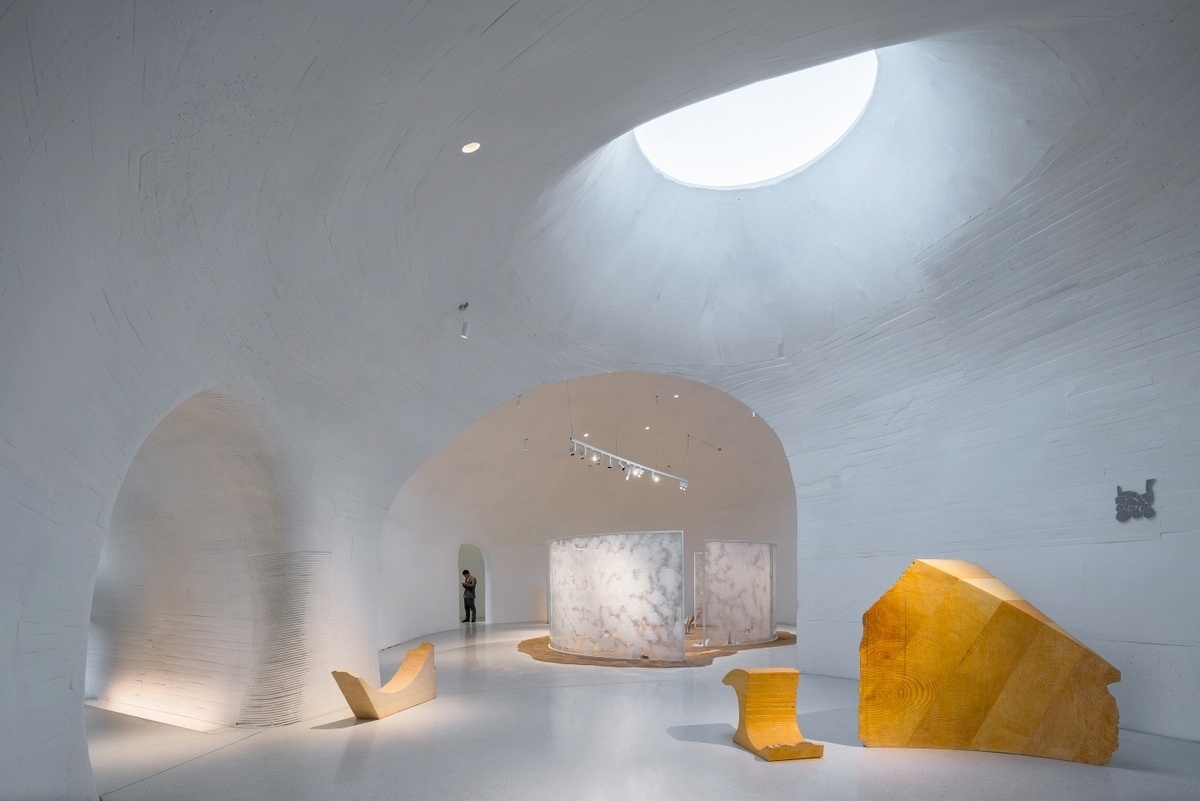
Hidden between the sand and the sea, this museum is an embodiment of primal, timeless space that reflects purity and simplicity. The building’s construction involved carving the sand beneath the dunes to safeguard the vulnerable ecosystem. As a result, organic cave-like spaces were created that blend harmoniously with the landscape, leaving only the skylights as a trace of their presence.
The concrete shell’s complex geometry was shaped by hand using formwork made from small strips of wood and elastic materials. The resulting irregularities and imperfections from the manual construction serve as an imprint of the workers’ craftsmanship. All in all, this subterranean museum is a testament to the connection between humans and nature, providing visitors with a one-of-a-kind experience.
Messner Mountain Museum Corones
By Zaha Hadid Architects, South Tyrol, Italy
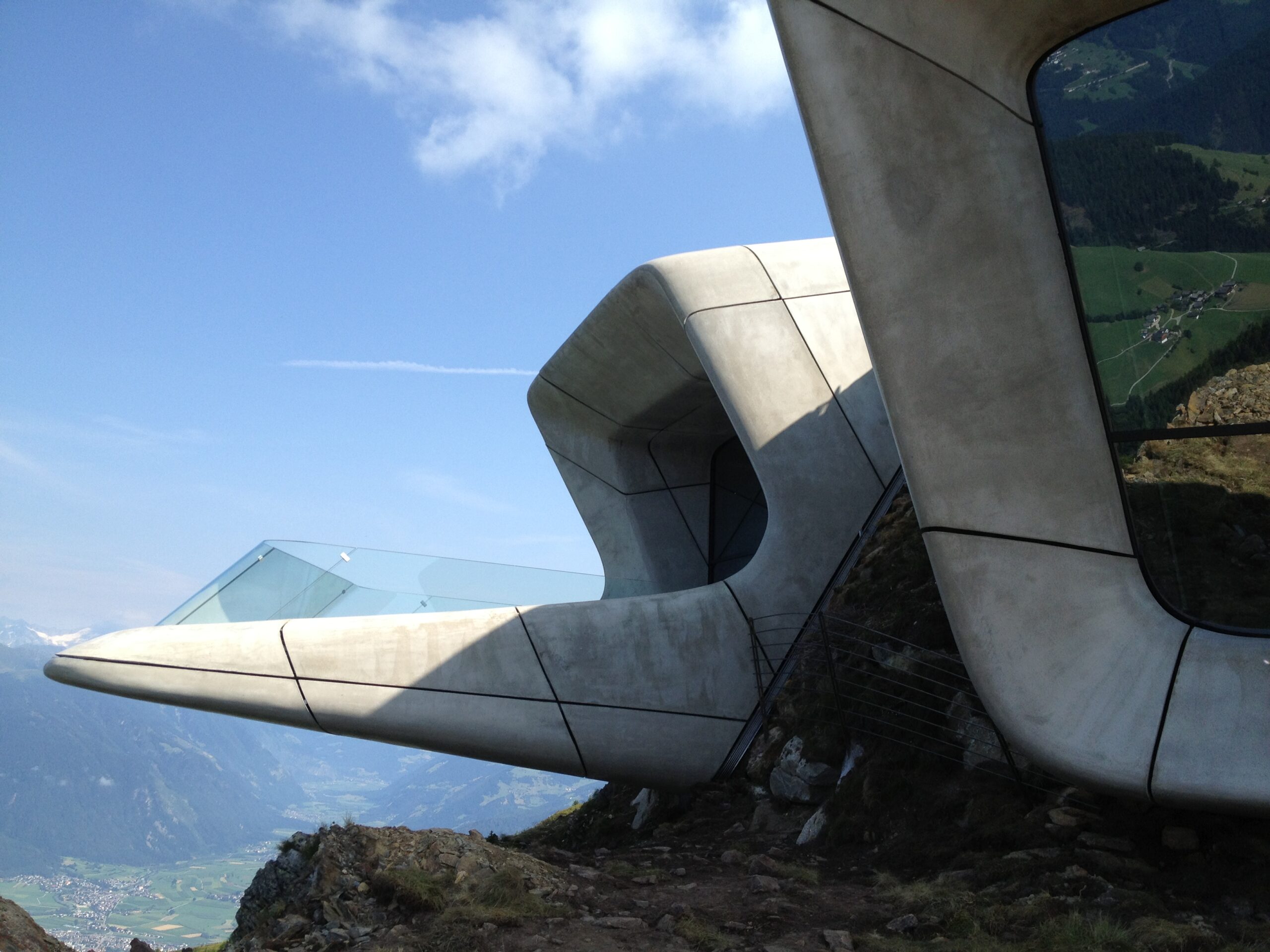
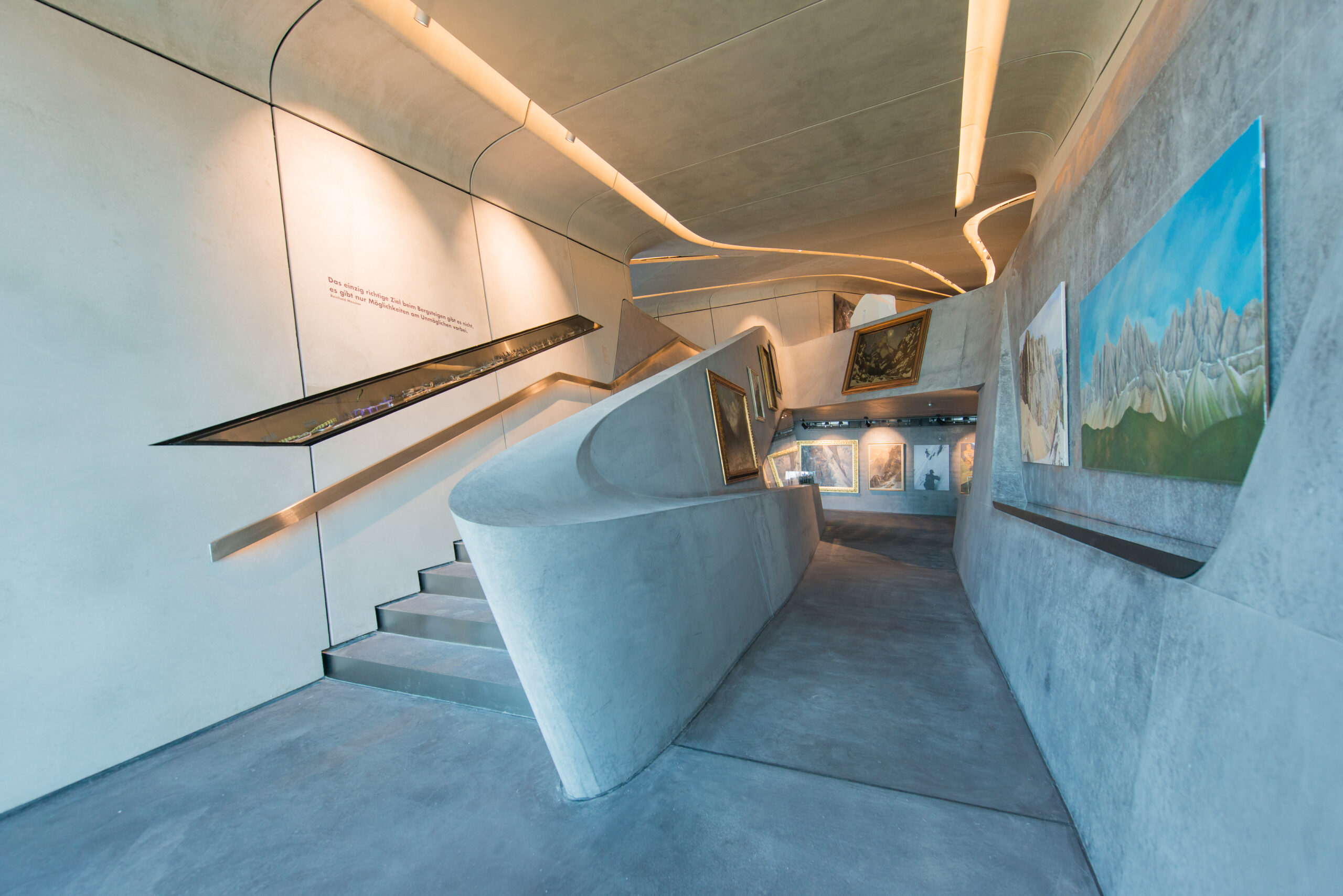 Set atop the majestic Mount Kronplatz, this subterranean museum established by legendary climber Reinhold Messner is a remarkable monument to the daring spirit of mountaineering. The 10,760-square-foot building is carved into the mountain, with fluid, interconnected volumes that create a labyrinth trajectory that seamlessly blends with the topography.
Set atop the majestic Mount Kronplatz, this subterranean museum established by legendary climber Reinhold Messner is a remarkable monument to the daring spirit of mountaineering. The 10,760-square-foot building is carved into the mountain, with fluid, interconnected volumes that create a labyrinth trajectory that seamlessly blends with the topography.
A cascading ramp leads the visitors on a dynamic tour across three levels, where they encounter temporary exhibitions and presentation areas that showcase a distinctive collection of objects from Messner’s archive. Upon exiting the exhibition area, museum-goers emerge on a breathtaking terrace offering 240-degree views of the surrounding landscapes from the Zillertal Alps, the Dolomites and the Marmolada.
TIRPITZ
By BIG – Bjarke Ingels Group + Tinker imagineers, Blåvand, Denmark

Photo by Architekturfotograf Rasmus Norlander

Photo by Architekturfotograf Rasmus Norlander
Nestled in the sands of Blåvand, Denmark, lies TIRPITZ Museum, an impressive cultural complex that breathes new life into a historic German WWII bunker. This architectural wonder transforms the bunker into a series of subterranean galleries integrated seamlessly into the dunes, creating an open oasis that feels light and free.
Approaching through the heath-lined pathways, visitors are drawn towards the central clearing where they can explore the four underground galleries, all carved into the sand and flooded with natural light. It’s an experience unlike any other, where the heavy history of the bunker meets the lightness of innovative architecture. With its concrete, steel, glass and wood elements, the design cleverly pays homage to the surrounding structures and landscape. Almost invisible, this subterranean museum is a hidden gem that should not be missed by history buffs, design fanatics and art enthusiasts alike.
DOMunder
By Tinker imagineers, Utrecht, Netherlands
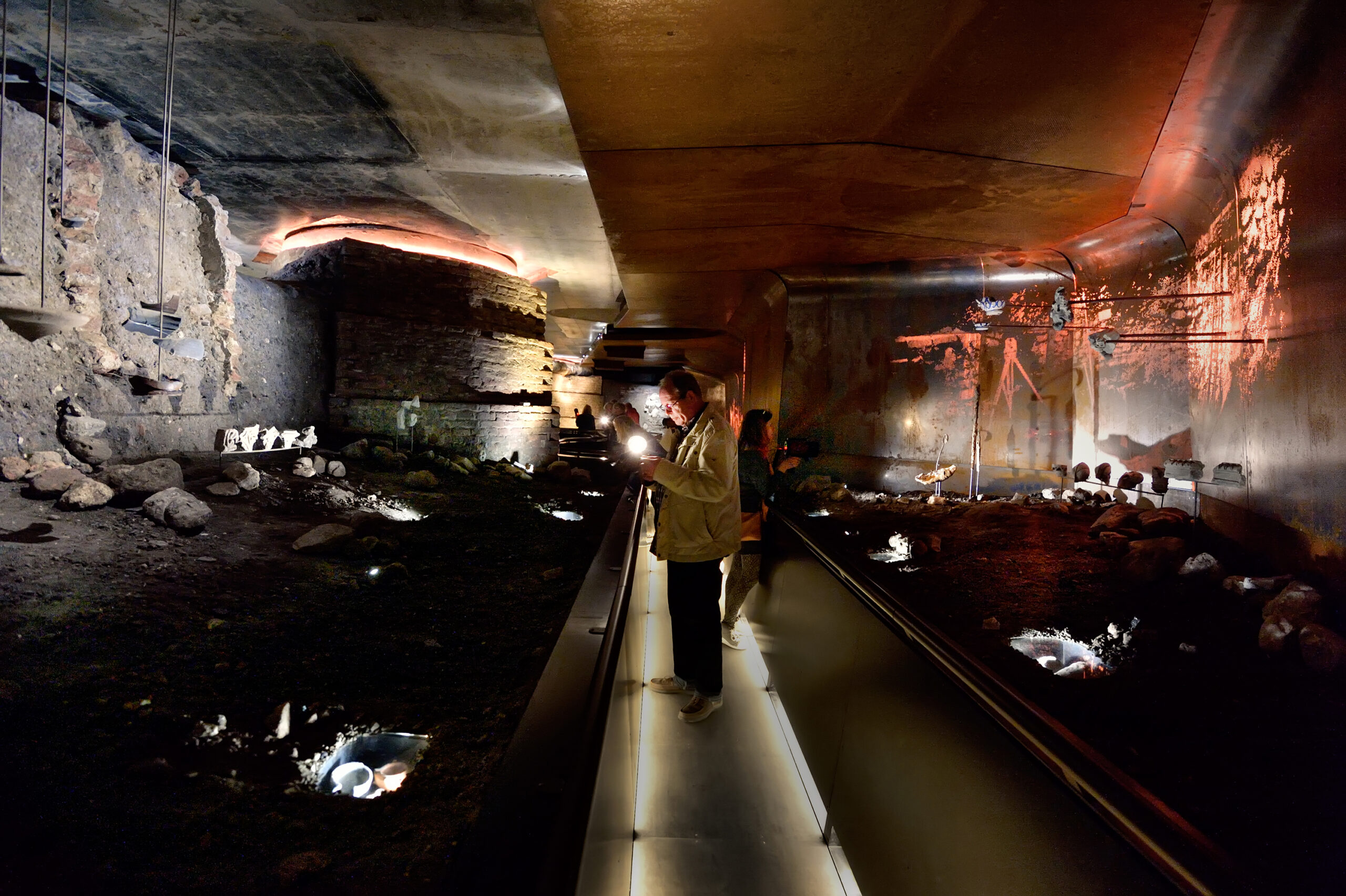
Photo by Mike Bink fotografie

Photo by Barbara Burg + Oliver Schuh / Palladium Photodesign
Hidden underneath Domplein square, this stunning museum reveals layers of Utrecht’s history dating back to the Roman Empire. The subterranean space is accessed through a single stairwell, which becomes a pathway, taking the visitor on an archeological expedition below the ground. One of the most unique aspects of the experience is the way it seamlessly integrates modern architecture and technology with ancient historical elements.
The exhibition spaces are thoughtfully designed to highlight the different layers of history found underground while visitors navigate through the museum with the help of interactive multimedia displays and audio guides. The ruins are illuminated by modern lighting that creates a mystical ambiance. Combined with the sound system and the 3D reconstructions of Domplein, this adds to the sense of wonder and discovery making the experience truly unforgettable.
Moesgaard Museum
By Henning Larsen, Aarhus, Denmark
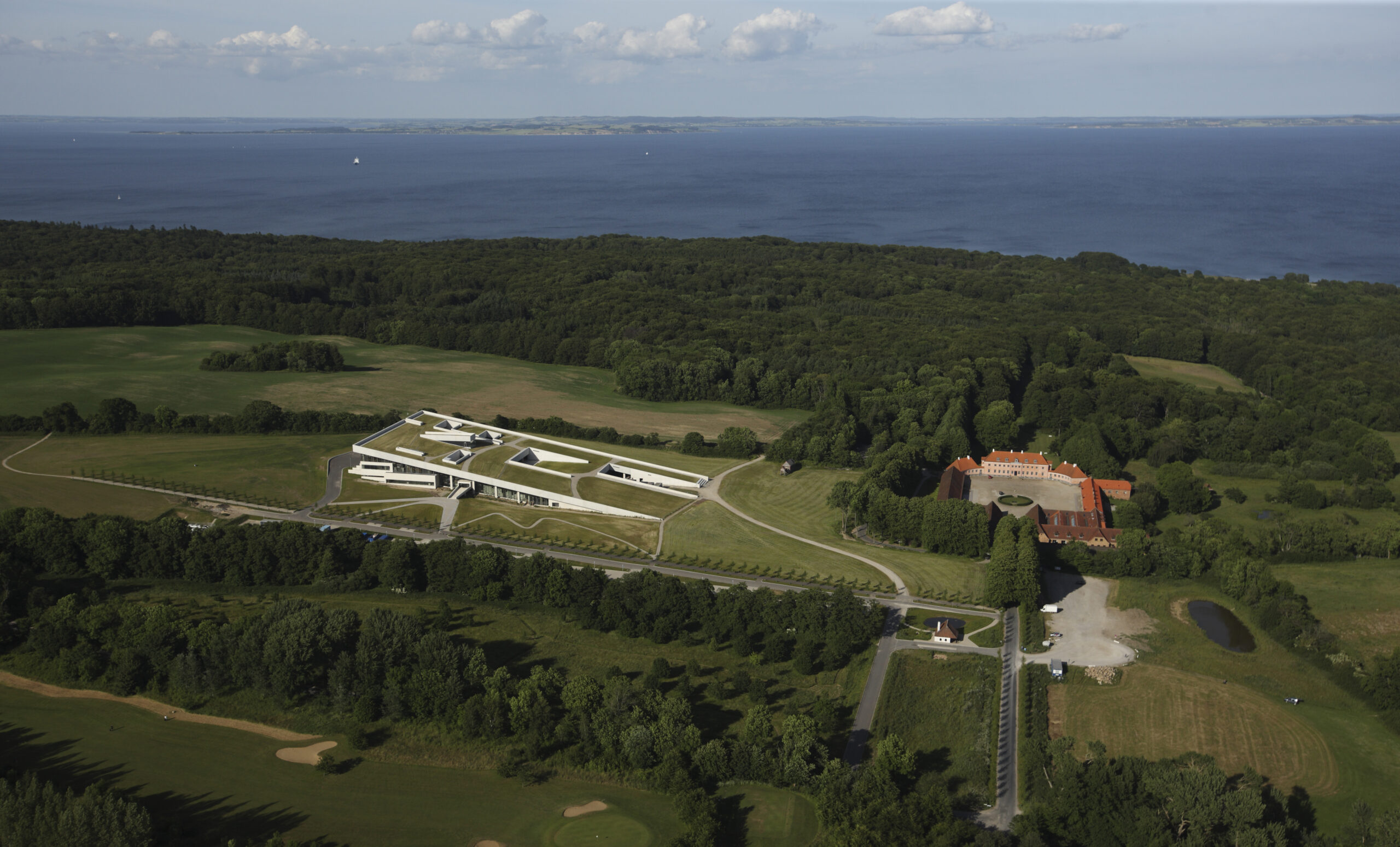
Photo by Jan Kofod Winther
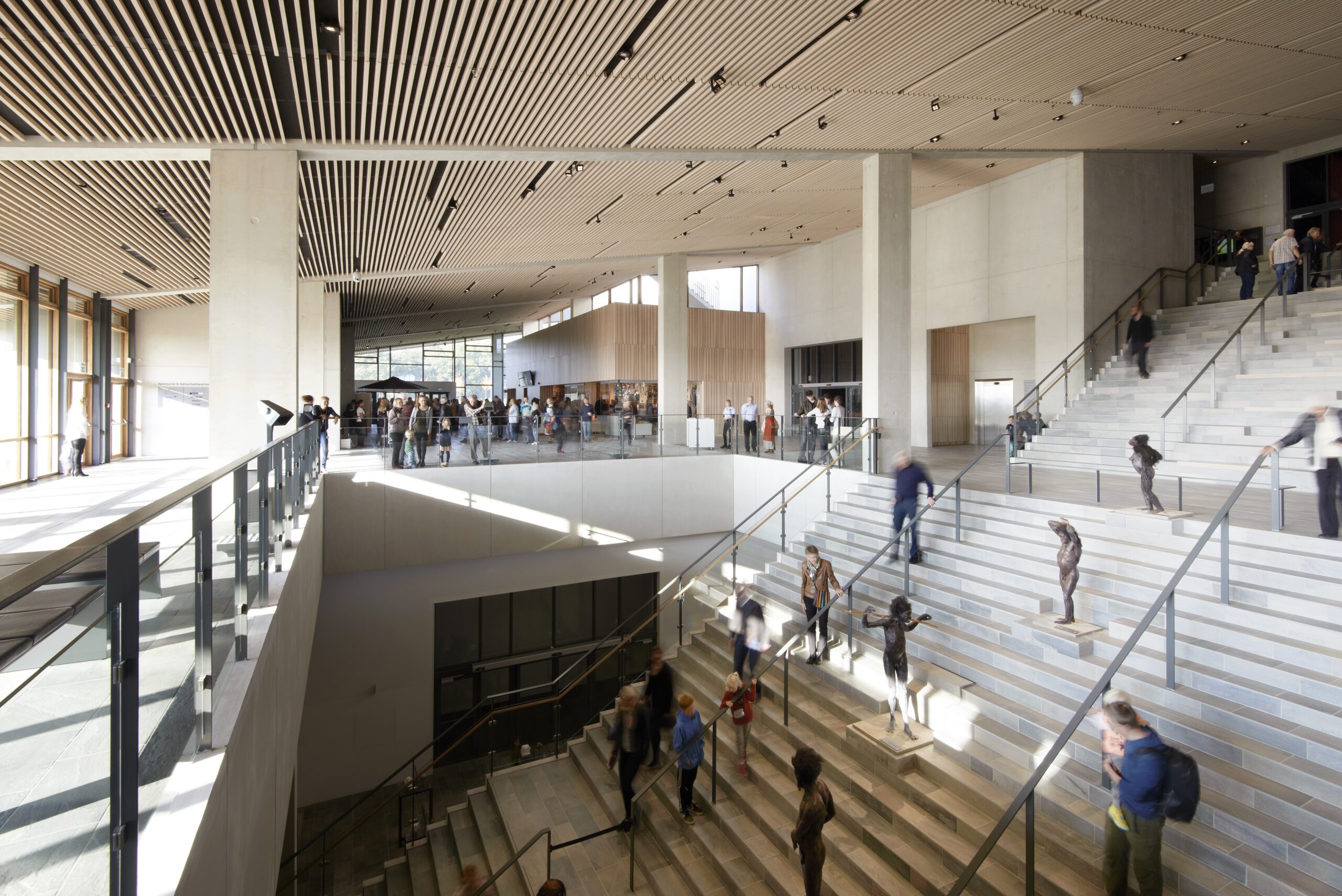
Photo by Martin Schubert
Seamlessly blending into the surrounding landscape, this subterranean museum is an awe-inspiring example of innovative architecture and design. With its terraced layout, visitors are taken on a captivating journey through a sequence of exhibits, gradually leading them below the surface. The building’s courtyards, terraces and cozy cave-like spaces add to the immersive experience, giving visitors a sense of being transported through time and space.
It’s no wonder that the Moesgaard Museum has become a beloved landmark in Aarhus, given its unique configuration and the way it harmoniously intertwines with its natural surroundings. The museum’s rooftop terrace, hailed as an excellent location to soak in nature’s beauty, is the perfect place for outdoor activities and events in the summer. And in the winter, it transforms into a thrilling sledding hill, adding even more excitement to an already captivating experience.
Danish National Maritime Museum
By BIG – Bjarke Ingels Group, Helsingør, Denmark

 This stunning masterpiece is designed to transport visitors through time and immerse them in Denmark’s fascinating maritime history. It is situated underground next to the world-renowned Kronborg Castle, which served as the inspiration for Shakespeare’s Hamlet. The galleries are nestled around the 60-year-old dry dock walls, which is the true centerpiece of any exhibition. A series of three double-level bridges span the dry dock, connecting the museum to adjacent cultural sites and providing visitors with shortcuts to different sections of the subterranean museum.
This stunning masterpiece is designed to transport visitors through time and immerse them in Denmark’s fascinating maritime history. It is situated underground next to the world-renowned Kronborg Castle, which served as the inspiration for Shakespeare’s Hamlet. The galleries are nestled around the 60-year-old dry dock walls, which is the true centerpiece of any exhibition. A series of three double-level bridges span the dry dock, connecting the museum to adjacent cultural sites and providing visitors with shortcuts to different sections of the subterranean museum.
The inside of the building feels like a ship, surrounding visitors with the sights, sounds and even smells of the sea. On top of that, all of the floors, including those that connect the exhibition spaces, auditorium, classroom, offices, café and dock, are sloped gently, creating exciting and sculpture-like spaces. All in all, its unique design and immersive visitor experience make it a cultural hub in the region and a must-see for anyone visiting Helsingør.
Amos Rex Museum
By JKMM Architects, Helsinki, Finland

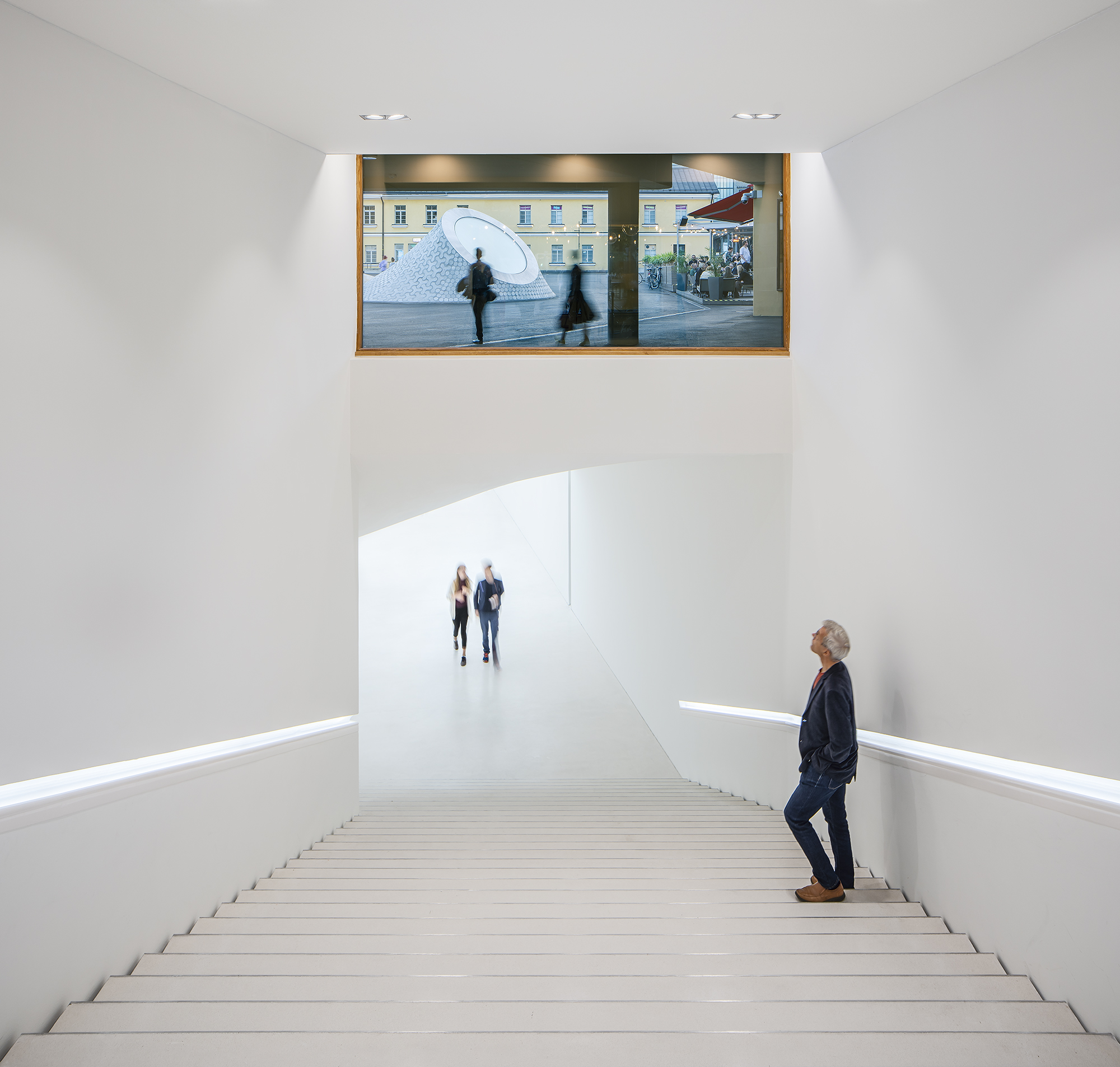 Located in the heart of Helsinki, this art museum connects the 1930s Lasipalatsi building to a unique underground space. The subterranean museum is built using large concrete domes that allow for column-free spaces and flexible exhibition areas below the ground while creating a distinctive square above. Natural light is brought into the domes through skylights which also offer striking views of life overhead, where visitors enjoy the new undulating landscape.
Located in the heart of Helsinki, this art museum connects the 1930s Lasipalatsi building to a unique underground space. The subterranean museum is built using large concrete domes that allow for column-free spaces and flexible exhibition areas below the ground while creating a distinctive square above. Natural light is brought into the domes through skylights which also offer striking views of life overhead, where visitors enjoy the new undulating landscape.
The underground galleries are entered through a staircase in the foyer of the refurbished Lasipalatsi, above which a picture window that allows views of the square is placed. Meanwhile, the refurbished building was restored with great attention to detail, preserving the valuable interiors and original neon lighting. Overall, the new museum offers visitors a memorable art experience, while creating a unique identity for the urban area.
Architects: Want to have your project featured? Showcase your work through Architizer and sign up for our inspirational newsletters.









